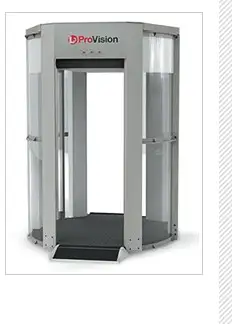
Lost in all the hype and hysteria following the Christmas Day attack and subsequent security overhaul is this: Whole-body imaging, a major aspect of the Department of Homeland Security’s (DHS) airport security overhaul, is far from perfect. In fact, many are wondering whether they are effective enough to warrant widespread implementation, and if that implementation is even widespread enough.
NPR reports that while whole-body imaging does a great job of detecting objects concealed beneath clothing, it performs poorly with items hidden in body cavities. According to NPR, whole-body imaging machines “use X-rays that penetrate through clothing and about an inch into a person’s body,” unlike X-rays, which use far higher and potentially more harmful levels of radiation to look beneath the skin. Body scanners can also miss explosives materials that aren’t dense enough to reflect the machines’ low-level X-rays.
Steven Smith, who designed early versions of today’s whole-body imaging machines (also called backscatter machines), told NPR, “In general, body scanners are able to give you the same degree of detection capability as frisking someone would, but it is far less invasive.”
But that’s the problem: If all body scanners offer is a quicker, friendlier version of frisking, do they really have much to offer airport security?
Well, yes, they do, just not as much as people might think or, more crucially, hope. Quickly frisking each passenger at a given airport would obviously be a new and effective security element, and, ignoring the privacy issue (and the cost, of course), this is a no-brainer from a security standpoint.
But if the capabilities of whole-body imaging only go so far, then so does the government’s plan to implement them. DHS Secretary Janet Napolitano recently pledged to install 300 of these machines, if not more, here in the U.S. Combined with the 40 or so that are already in place, that brings our national total to somewhere around 350 by year’s end. Which sounds like a lot—until you consider there are roughly 100 primary and secondary airports in the country. That averages out to less than four machines per U.S. airport. And if you think JFK is only getting four body scanners, think again.
The problem, as security consultant Bruce Schneier points out to NPR, is that there simply aren’t enough scanners to cover major airports like JFK or Atlanta and small airports like, say, Burlington, Vermont. This puts DHS in a tough position: If these scanners really are part of the future, where do we put them? Obvious locations like San Francisco International, or off-the-beaten-path airports like Manchester, New Hampshire? As Schneier notes, “The 9/11 terrorists didn’t go through security in Boston,” he says. “They went through security in places like Maine.”
So if the new technology is so full of holes, why bother? If it doesn’t catch everything, and can’t quickly be placed at every security checkpoint at every airport in the country, and comes with a host of privacy issues, is it worth it?
I can’t and won’t pretend to know the answer to those questions. But if the body-scanner debate reveals any certainties, it’s that when it comes to air crime, there’s no silver bullet.
We hand-pick everything we recommend and select items through testing and reviews. Some products are sent to us free of charge with no incentive to offer a favorable review. We offer our unbiased opinions and do not accept compensation to review products. All items are in stock and prices are accurate at the time of publication. If you buy something through our links, we may earn a commission.
Related
Top Fares From
Today's Top Travel Deals
Brought to you by ShermansTravel
Kenya: 14-Night Tour, Incl. Tanzania &...
smarTours
 vacation
$7125+
vacation
$7125+
7-Night Bermuda Cruise From Round-Trip Cruise...
Norwegian Cruise Line
 cruise
$1036+
cruise
$1036+
Ohio: Daily Car Rentals from Cincinnati
85OFF.com
 Car Rental
$19+
Car Rental
$19+



